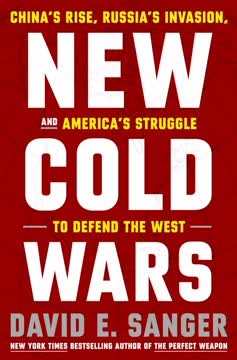Key Takeaways
1. The Illusion of Permanent Peace After the Cold War
For more than thirty years—from the fall of the Berlin Wall until the invasion of Ukraine—there was a sense of certainty that the greatest byproduct of America’s undeniable victory in the Cold War was something like a permanent era of peace among the world’s nuclear superpowers.
Post-Cold War complacency. The collapse of the Soviet Union fostered a widespread belief in a lasting era of peace, particularly among nuclear superpowers. This optimism led to a relaxation of vigilance and a downplaying of potential threats, blinding many to the resurgence of geopolitical rivalries.
The allure of a unipolar world. The United States, as the sole superpower, enjoyed a period of unchallenged dominance, leading to a sense of invincibility and a neglect of emerging challenges. This overconfidence contributed to strategic miscalculations and a failure to anticipate the rise of competing powers.
Distraction and internal divisions. America's focus shifted to costly wars in the Middle East, a deadly pandemic, and internal political upheavals, diverting attention and resources from addressing larger strategic threats posed by Russia and China. This distraction allowed these powers to advance their agendas with less resistance.
2. The Misguided Assumption of Western Integration
We were also convinced that, for all the shock, trauma, and disorder of the twenty-first century, the world would sort itself out in the way we had long anticipated.
Economic interdependence as a pacifier. A prevailing belief held that economic ties would prevent conflict, as nations would prioritize financial gains over territorial ambitions. This assumption proved flawed, as leaders like Putin and Xi prioritized nationalistic goals despite potential economic repercussions.
The "Washington Consensus" fallacy. The "Washington Consensus," promoting globalization as a path to economic growth and political stability, overlooked the negative impacts on middle-class workers and the limitations of economic interdependence in restraining aggressive behavior. This oversimplified view led to a misjudgment of the true motivations and ambitions of rival powers.
Ignoring warning signs. Despite clear indications of Russia's aggression (Georgia, Crimea) and China's expansionist policies (South China Sea, Belt and Road Initiative), the West clung to the belief that these nations would ultimately integrate into the existing world order. This denial of reality hampered effective responses to emerging threats.
3. The Re-emergence of Superpower Conflict
This is a book about a global shock that took Washington by surprise: the revival of superpower conflict.
A rude awakening. The invasion of Ukraine shattered the illusion of a permanently peaceful world order, forcing a reassessment of long-held assumptions about superpower relations. The revival of great power competition caught many in Washington off guard, highlighting a failure to anticipate the resurgence of traditional geopolitical rivalries.
The "New Cold War" framing. The phrase "New Cold War" gained traction, but it's an imperfect analogy. The current landscape involves a more complex web of interconnected threats, including technological, economic, and military dimensions, making it distinct from the ideological struggle of the past.
Biden's ideological framing. Biden framed the conflict as a battle between democracy and autocracy, adding an ideological dimension to the competition. This framing, while politically useful, alienated some allies and risked oversimplifying the complex motivations driving the actions of Russia and China.
4. The New Cold Wars: A Multifaceted Threat
Today, Biden and his aides pointed out, China was a far broader potential strategic adversary than the Soviet Union ever was.
Beyond military might. The new cold wars are not solely defined by military competition. They encompass technological dominance, economic influence, and ideological clashes, creating a more complex and multifaceted threat landscape.
China's comprehensive challenge. China presents a unique challenge, acting as a technological competitor, military rival, and economic powerhouse simultaneously. This multifaceted nature requires a more nuanced and comprehensive strategy than traditional containment.
The digital battlefield. Cyberspace has emerged as a critical domain of conflict, with attacks on infrastructure and information warfare becoming increasingly common. This digital battlefield blurs the lines between traditional warfare and peacetime activities, requiring new defensive and offensive capabilities.
5. Putin's Entitlement and the Failure of Deterrence
Putin, Burns told me later, felt “almost an entitlement to control Ukraine, and control Ukraine’s choices as well.”
Putin's imperial ambitions. Putin's actions are driven by a deep-seated belief in Russia's right to control Ukraine and its sphere of influence. This sense of entitlement fuels his aggressive foreign policy and disregard for international norms.
The failure of deterrence. Despite warnings and sanctions, Putin underestimated the West's resolve and the potential costs of invading Ukraine. This miscalculation highlights the limitations of traditional deterrence strategies in dealing with leaders driven by ideological or personal ambitions.
The West's misreading of Putin. A consistent underestimation of Putin's true intentions and risk appetite contributed to the failure to prevent the invasion. A belief that economic interests would outweigh imperial ambitions proved to be a dangerous misjudgment.
6. China's Economic Rise and Technological Ambitions
No wonder the Chinese called it a containment policy.
Economic power as a tool. China leverages its economic strength to exert political influence, using initiatives like the Belt and Road Initiative to expand its reach and challenge the existing world order. This economic coercion poses a significant threat to the sovereignty and independence of smaller nations.
Technological dominance as a goal. China's "Made in China 2025" plan reveals its ambition to dominate key technologies, including semiconductors, artificial intelligence, and 5G networks. This technological ambition poses a direct challenge to Western leadership and raises concerns about security and control over critical infrastructure.
The challenge of interdependence. The deep economic interdependence between the United States and China creates a complex dilemma. While economic ties can foster stability, they also provide China with leverage and make it difficult to impose meaningful consequences for its aggressive behavior.
7. The Ukraine War as a Catalyst for Global Realignment
The war was regional; the stakes were global.
Accelerating existing trends. The Ukraine war has accelerated existing trends in global politics, including the decline of American power, the rise of China, and the fragmentation of the international order. The conflict has exposed the fragility of existing alliances and the growing assertiveness of revisionist powers.
A new axis of resistance. The war has strengthened the partnership between Russia and China, creating a powerful axis of resistance to the United States and its allies. This alliance, while not without its tensions, poses a significant challenge to the existing world order and could lead to a more multipolar and unstable world.
The war's global impact. The conflict has had far-reaching consequences beyond Europe, impacting food security, energy markets, and global supply chains. These disruptions have exacerbated existing inequalities and created new opportunities for China to expand its influence in the developing world.
8. The Limits of American Power and Influence
Each one of those presidents believed that the strength of America’s economy, its technology, or the U.S. president’s own persuasive power could bend history in Washington’s direction.
The illusion of control. American presidents have often overestimated their ability to shape global events, believing that their economic strength, technological prowess, or personal charisma could bend history in Washington's direction. This overconfidence has led to miscalculations and a failure to recognize the limits of American power.
Internal divisions and distractions. Internal political divisions, economic anxieties, and social upheavals have weakened America's ability to project power abroad. These internal challenges have diverted attention and resources from addressing larger strategic threats.
The rise of revisionist powers. The emergence of China and Russia as revisionist powers, challenging the existing world order, has further constrained American influence. These powers are actively seeking to undermine American leadership and create a more multipolar world.
9. The Nuclear Paradox and the Risk of Escalation
So Biden laid out two goals, in tension with each other: Do everything you can to help Ukraine, and don’t get sucked into World War III.
The return of nuclear threat. The Ukraine war has brought the threat of nuclear war back to the forefront of international relations. Putin's repeated hints about using nuclear weapons have raised the stakes of the conflict and created a dangerous new dynamic.
The limits of deterrence. The threat of nuclear retaliation may not be sufficient to deter Putin from using tactical nuclear weapons in Ukraine. The potential for miscalculation or escalation remains high, creating a precarious situation with potentially catastrophic consequences.
The need for a new nuclear strategy. The emergence of multiple nuclear powers and the development of new weapons technologies require a rethinking of traditional deterrence strategies. The United States must find ways to manage the risks of nuclear escalation while maintaining its commitment to defending its allies.
10. The Importance of Alliances and Strategic Partnerships
We’ll cooperate wherever we can; we’ll contest where we must.
The power of alliances. The Ukraine war has demonstrated the importance of alliances in confronting aggression. The United States' ability to rally allies and partners has been crucial in providing support to Ukraine and isolating Russia.
Building a network of partnerships. The United States needs to cultivate a broader network of strategic partnerships, including with countries that may not share all of its values. These partnerships are essential for addressing global challenges and countering the influence of revisionist powers.
The need for burden-sharing. Maintaining a strong network of alliances requires a commitment to burden-sharing. The United States cannot shoulder the entire responsibility for global security and must work with its allies to ensure that they are contributing their fair share.
11. The Blurring Lines of Modern Warfare
In his colorful way, Milley had put his finger on one of the most unsettling features of the new geopolitical era: It is part 1914, part 1941, and part 2022.
Hybrid warfare. Modern conflicts are characterized by a blurring of lines between traditional warfare, cyberattacks, disinformation campaigns, and economic coercion. This hybrid approach requires a more integrated and adaptable response.
The rise of private actors. Technology companies and private military contractors are playing an increasingly important role in modern conflicts. This trend raises ethical and legal questions about accountability and control.
The human element. Despite the increasing sophistication of technology, the human element remains crucial in warfare. The fighting spirit of the Ukrainian people and the leadership of Zelensky have been key factors in resisting the Russian invasion.
12. The Enduring Struggle for Global Order
The post–Cold War era is definitively over,” Biden’s national security strategy declared in late 2022, as the Ukraine war devolved into a stalemate, “and a competition is underway between the major powers to shape what comes next.
A new era of competition. The world is entering a new era of great power competition, with the United States, China, and Russia vying for influence and shaping the future of the international order. This competition will be long-term and multifaceted, requiring sustained commitment and strategic thinking.
The murkiness of victory. Unlike the Cold War, the outcome of this new competition is uncertain. There is no guarantee that the United States will emerge as the clear victor, and the definition of "victory" itself is more complex and nuanced.
The need for adaptation. The United States must adapt its foreign policy, military strategy, and economic policies to meet the challenges of this new era. This requires a willingness to challenge long-held assumptions, embrace innovation, and prioritize long-term strategic goals over short-term political gains.
Last updated:
FAQ
What’s New Cold Wars by David E. Sanger about?
- Revival of superpower rivalry: The book examines the resurgence of great power competition, focusing on China’s rise, Russia’s invasion of Ukraine, and America’s struggle to defend the West.
- Multiple, overlapping conflicts: Sanger details how technological, military, and ideological challenges have created a new era of “cold wars” distinct from the original U.S.-Soviet rivalry.
- Insider perspective: The narrative draws on decades of reporting and interviews, offering a comprehensive look at the decisions and strategies of leaders like Biden, Xi Jinping, and Putin.
- Global implications: The book covers diplomatic, economic, and technological dimensions, showing how these tensions shape the 21st-century international order.
Why should I read New Cold Wars by David E. Sanger?
- Comprehensive current history: The book provides an up-to-date, nuanced account of the most critical international security challenges facing the world today.
- Insider access and analysis: Sanger’s reporting and interviews with key policymakers offer unique insights into the thinking behind U.S., Chinese, and Russian strategies.
- Understanding modern geopolitics: Readers gain context on complex issues like cyber warfare, nuclear threats, and technological competition, often missing from mainstream coverage.
- Essential for informed citizens: The book is vital for anyone seeking to understand the realities behind headlines and the future of global security.
What are the key takeaways of New Cold Wars by David E. Sanger?
- New era of complex conflict: The world faces multiple, overlapping “new cold wars” involving nuclear arms, space, AI, and cyber warfare, making global security more precarious.
- U.S. faces unprecedented challenges: America must confront simultaneous threats from Russia, China, North Korea, and Iran, requiring a rebuilt technological and industrial base.
- China’s rise is pivotal: China is now a global player with ambitions to displace U.S. influence, demanding a shift from engagement to competitive coexistence.
- Technological acceleration: Advances in AI, hypersonic weapons, and cyber capabilities have increased risks and shortened decision times, complicating diplomacy and crisis management.
How does New Cold Wars by David E. Sanger define and compare the “new cold wars” to the original Cold War?
- Multiple simultaneous rivalries: Unlike the bipolar U.S.-Soviet Cold War, today’s conflicts involve several powers—U.S., China, Russia, Iran, North Korea—engaged in overlapping struggles.
- Technological and economic fronts: The new cold wars are fought not just with military might, but also through technology, cyber operations, and economic competition.
- Enduring, complex competition: The book argues these rivalries may be a near-permanent condition, lacking the clear end seen with the Soviet collapse.
- Higher unpredictability: Rapid technological change and more actors make management and de-escalation more difficult than during the original Cold War.
How does New Cold Wars by David E. Sanger describe the U.S.-China relationship and its evolution?
- From engagement to competition: The U.S. shifted from decades of engagement and hope for Chinese liberalization to a more confrontational, competitive stance.
- Technology and economic rivalry: The battle for semiconductor supremacy, AI, and critical technologies is central, with the U.S. imposing export controls and investing in domestic manufacturing.
- Diplomatic complexities: Despite tensions, moments of dialogue persist, but fundamental differences and mutual suspicion remain.
- Competitive coexistence: The relationship is now framed as one of “competitive coexistence,” balancing rivalry with the need for communication and some cooperation.
What insights does New Cold Wars by David E. Sanger provide about Russia’s invasion of Ukraine?
- Early intelligence warnings: U.S. agencies detected Putin’s invasion plans well before 2022, but many Western leaders underestimated the threat.
- Proxy war dynamics: The conflict is portrayed as a proxy war between Russia and the West, with the U.S. providing significant military and intelligence support to Ukraine.
- Human and geopolitical costs: The war has caused massive casualties, economic disruption, and a reshaping of alliances, especially within NATO.
- Risks of escalation: Sanger discusses the dangers of nuclear threats and the uncertainty surrounding the war’s endgame.
How does New Cold Wars by David E. Sanger address the role of technology—especially AI, cyber, and semiconductors—in modern conflicts?
- AI as a new arms race: Both the U.S. and China are investing heavily in AI, with concerns about autonomous weapons and the need for human oversight in nuclear decisions.
- Cyberwarfare’s centrality: Cyberattacks, such as those on Colonial Pipeline and Ukrainian infrastructure, are now integral to warfare and national security.
- Semiconductor supremacy: Control over advanced chip manufacturing, especially Taiwan’s TSMC, is a strategic asset and vulnerability, prompting U.S. efforts to rebuild domestic production and restrict Chinese access.
What does New Cold Wars by David E. Sanger reveal about U.S. foreign policy shifts in the Middle East?
- Refocusing on great power competition: Biden’s administration aims to stabilize the Middle East to concentrate on challenges from China and Russia.
- Diplomatic progress and setbacks: Moves like Saudi-Israel rapprochement and new defense pacts are highlighted, but events like the 2023 Hamas attack on Israel show persistent volatility.
- Iran’s disruptive role: Iran’s nuclear ambitions and proxy activities remain central to regional instability, complicating U.S. strategy.
- Balancing alliances: The U.S. must manage relationships with both democratic and autocratic partners to maintain regional stability.
How does New Cold Wars by David E. Sanger explain the U.S. policy of “strategic ambiguity” toward Taiwan?
- Ambiguous defense commitments: The U.S. deliberately avoids stating whether it would defend Taiwan militarily, aiming to deter both Chinese aggression and unilateral Taiwanese independence.
- Biden’s evolving rhetoric: Biden’s statements have sometimes suggested stronger commitments, causing confusion and requiring clarification by officials.
- Impact on regional stability: This ambiguity is intended to keep China guessing, but rising tensions and Taiwan’s semiconductor importance make the policy harder to maintain.
- Strategic calculations: The policy balances deterrence with the risk of escalation, factoring in economic interdependence and shifting political dynamics in Taiwan.
What are the nuclear risks and escalation dangers discussed in New Cold Wars by David E. Sanger?
- Putin’s nuclear threats: The book details how Russia has issued veiled threats to use tactical nuclear weapons in Ukraine, breaking post–World War II taboos.
- Nuclear paradox: Ukrainian battlefield successes may increase the risk of Russian nuclear escalation, creating a constant dilemma for U.S. and allied policymakers.
- Diplomatic efforts: The U.S. has sought to deter nuclear use through direct warnings to Russia and by securing public opposition from China and India.
- Fragile deterrence: The risk of miscalculation, human error, or accidents is heightened in this new era of nuclear brinkmanship.
How does New Cold Wars by David E. Sanger describe the evolving China-Russia partnership?
- From rivalry to partnership: Historically mistrustful, China and Russia have developed a closer strategic relationship, exemplified by their 2022 “no limits” declaration.
- Personal ties: The bond between Xi Jinping and Vladimir Putin underpins increased cooperation in military, economic, and diplomatic spheres.
- Shared interests, lingering mistrust: Both seek to challenge U.S. dominance, but underlying suspicions and competing interests persist.
- Global security implications: Their partnership complicates Western strategies and raises concerns about coordinated challenges to the international order.
What are the main challenges and divisions among U.S. allies regarding support for Ukraine, according to New Cold Wars by David E. Sanger?
- Divergent European perspectives: Eastern European countries push for total Ukrainian victory, while Western European nations often favor negotiated settlements to avoid prolonged conflict.
- Military aid debates: Disputes over sending advanced weapons, such as tanks, reflect broader political and logistical concerns among allies.
- Coalition fragility: War fatigue, resource constraints, and political divisions threaten the unity of the alliance supporting Ukraine.
- Global public opinion: Support for Ukraine varies worldwide, with some countries abstaining from sanctions or aid due to their own interests or domestic pressures.
What are the best quotes from New Cold Wars by David E. Sanger and what do they mean?
- “For two large countries like China and the United States, turning their back on each other is not an option.” — Xi Jinping, emphasizing the necessity of dialogue and the dangers of outright confrontation.
- “The past two and a half years have upended assumptions on the relative trajectories of the United States and China.” — Jake Sullivan, highlighting the unpredictability and rapid changes in global power dynamics.
- “The world is entering a period of new cold wars.” — Sanger, encapsulating the book’s central thesis about the complexity and endurance of modern great power competition.
- “Managing these tensions requires new strategies and caution.” — Sanger, warning that old Cold War playbooks are insufficient for today’s multifaceted challenges.
Review Summary
New Cold Wars examines America's foreign policy challenges in a multipolar world, focusing on tensions with China and Russia. Readers praise Sanger's comprehensive analysis, compelling narrative, and deep insights into recent geopolitical events. Many find it an essential read for understanding current global dynamics, though some note its U.S.-centric perspective. The book covers topics like the Ukraine invasion, Taiwan-China relations, and technological competition. While dense at times, it's lauded for its readability and timeliness. Critics argue it lacks novel information or suffers from hindsight bias.
Similar Books
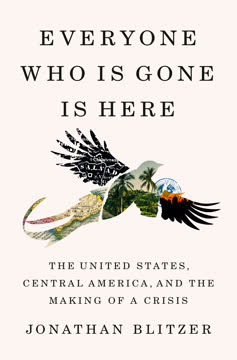
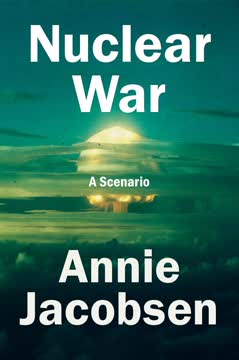
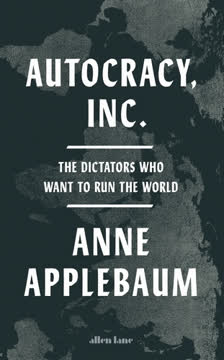
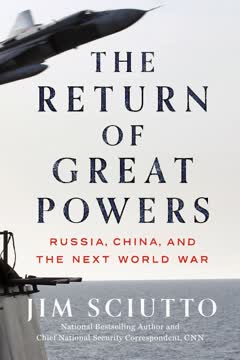
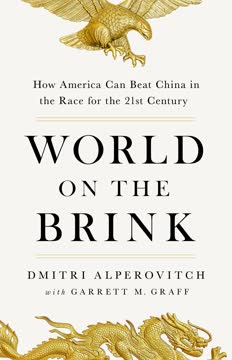
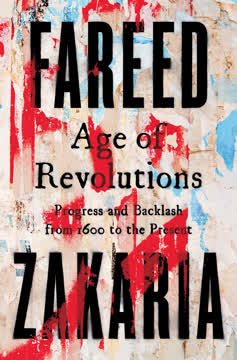
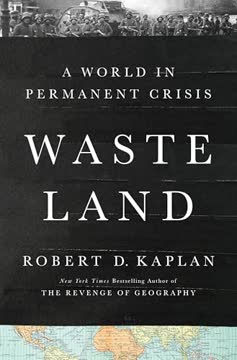
Download PDF
Download EPUB
.epub digital book format is ideal for reading ebooks on phones, tablets, and e-readers.
